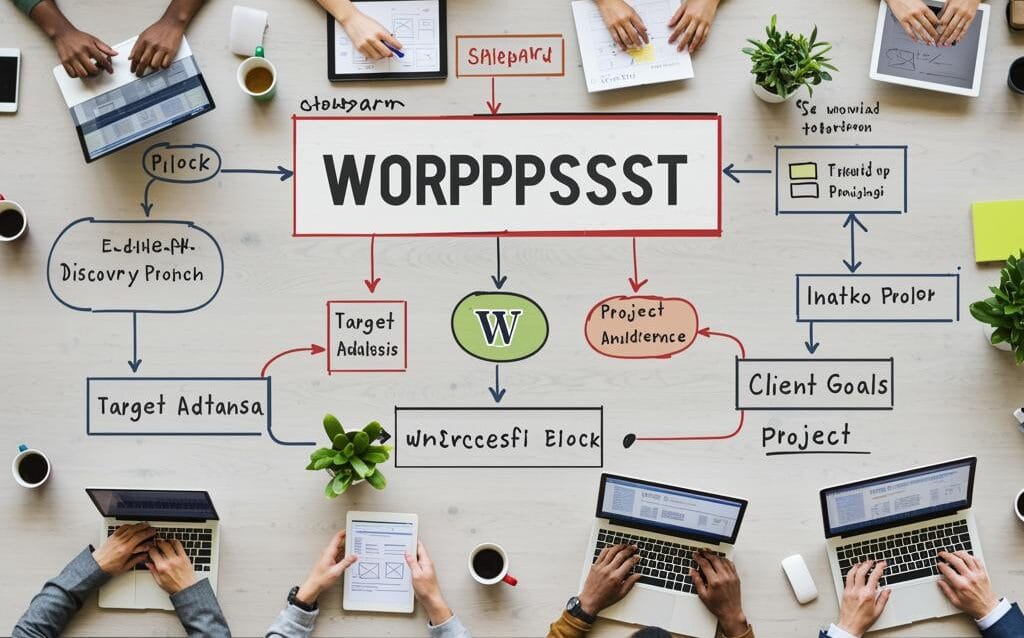WordPress Discovery: Qualify Clients & Win Better Projects
WordPress Discovery Process: Qualifying Clients for Better Projects
The WordPress discovery process is a crucial, yet often overlooked, step in ensuring project success. It’s more than just a simple meeting; it’s a structured exploration designed to understand a client’s needs, goals, and expectations. By properly qualifying clients upfront, you can avoid scope creep, miscommunication, and ultimately, build better WordPress projects that satisfy both you and your clients.
Understanding the Importance of Client Qualification
Why is client qualification so vital? Think of it as laying a solid foundation before building a house. Without a clear understanding of the client’s vision, budget, and technical capabilities, you’re essentially building blind. This can lead to frustration, delays, and a final product that doesn’t meet anyone’s expectations. Effective qualification helps you:
- Determine Project Feasibility: Can you realistically deliver what the client wants within their budget and timeline?
- Align Expectations: Ensure both you and the client are on the same page regarding the project’s scope, features, and deliverables.
- Identify Potential Red Flags: Recognize clients who may be difficult to work with or unrealistic in their demands.
- Build Stronger Relationships: Demonstrate your professionalism and commitment to understanding their needs.
- Increase Project Profitability: By avoiding scope creep and miscommunication, you can stay on budget and maximize your earnings.
Key Steps in the WordPress Discovery Process
The discovery process isn’t a one-size-fits-all approach, but here’s a breakdown of essential steps you can adapt to your specific needs:
1. Initial Consultation and Needs Assessment
This is your first impression, so make it count. Focus on listening and asking open-ended questions to understand the client’s background, business goals, and current challenges. Key questions to ask include:
- What problem are you trying to solve with this WordPress project?
- What are your key business objectives?
- What is your current website (if any) and what do you like/dislike about it?
- Who is your target audience?
- What are your competitors doing well online?
2. Defining Project Scope and Requirements
Once you have a good understanding of the client’s needs, start defining the project’s scope and specific requirements. This involves outlining the features, functionality, and content that will be included in the WordPress website. Consider the following:
- Website Structure: How many pages will the site have? What is the hierarchy of information?
- Functionality: What specific features are required (e.g., e-commerce, blog, contact form, membership area)?
- Design Preferences: Do they have any existing branding guidelines or preferred design styles?
- Content Strategy: Who will be responsible for creating and managing the website content?
- Technical Requirements: Are there any specific hosting requirements or integrations with other systems?
3. Budget and Timeline Discussion
This is a critical step that often makes or breaks a project. Be upfront about your pricing and be prepared to discuss the client’s budget realistically. Explain your pricing structure and what factors influence the overall cost. Similarly, discuss the project timeline and any potential dependencies that could impact the delivery date. Discuss:
- What is their budget for this project?
- What is their ideal launch date?
- Are they aware of the ongoing maintenance costs associated with a WordPress website?
4. Technical Assessment and Feasibility Study
Before committing to the project, conduct a thorough technical assessment to determine if the client’s requirements are feasible within their budget and timeline. This may involve researching specific plugins, themes, or integrations. Consider:
- Are there existing WordPress plugins or themes that can meet the client’s needs?
- Are there any technical limitations that could impact the project’s success?
- Will the client require ongoing technical support or training?
Identifying Red Flags During the Discovery Process
Not all clients are created equal. Be aware of potential red flags that could indicate a problematic project:
- Unrealistic Expectations: Clients who expect a complex website for a ridiculously low price.
- Scope Creep: Clients who constantly add new features or requirements without adjusting the budget or timeline.
- Poor Communication: Clients who are unresponsive or difficult to communicate with.
- Micromanagement: Clients who constantly interfere with the design or development process.
- Lack of Trust: Clients who question your expertise or constantly second-guess your decisions.
If you identify any of these red flags, it’s important to address them early on. Be honest with the client about your concerns and be prepared to walk away from the project if necessary. Protecting your time and reputation is paramount.
Conclusion: Investing in Discovery for Long-Term Success
The WordPress discovery process is an investment that pays off in the long run. By taking the time to properly qualify clients, you can avoid costly mistakes, build stronger relationships, and deliver better WordPress projects that exceed expectations. Remember to be thorough, ask the right questions, and trust your gut. A well-executed discovery process sets the stage for a successful and profitable partnership.

